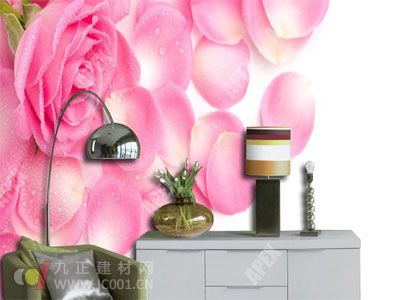Wallpapers are widely used across Europe, America, Southeast Asia, and Japan due to their vibrant colors, diverse designs, eco-friendly nature, easy installation, and affordable pricing. They are typically made from bleached chemical wood pulp, which is then processed through coating, printing, embossing, surface treatment, and cutting to become the final product. The market currently offers several types of wallpapers, including pure paper, PVC-based, non-woven, and natural plant-based options.
Non-woven wallpaper has become a popular eco-friendly choice globally. It is manufactured using natural fibers like cotton and linen or synthetic materials such as polyester and acrylic, using a non-woven process. This type of wallpaper does not contain PVC, polyethylene, or chlorine. When burned completely, it only emits carbon dioxide and water, without producing thick smoke or harmful odors. Non-woven wallpaper is flexible, resistant to aging and cracking, and offers excellent breathability and moisture resistance. It maintains its color and pattern even after repeated cleaning, making it a durable and attractive option.
Natural plant-based wallpapers are crafted from organic fibers like hemp, grass, wood, and leaves, offering a luxurious and eco-conscious decorative solution. These wallpapers undergo composite processing, giving them flame-retardant properties, sound absorption, breathability, and a rich, natural texture that enhances any space.

When selecting wallpapers, consumers should consider not only the design and furniture style but also the material quality. Here are some key points to keep in mind:
First, prioritize well-known brands. Reputable brands usually ensure high-quality materials, proper manufacturing processes, and reliable after-sales service. However, be cautious—some stores may sell products from smaller factories under the brand's name. Always check for the brand’s logo, store decoration, and manufacturer details to avoid being misled.
Second, examine the print quality. Look for clear patterns, smooth color transitions, accurate details, and check for issues like color distortion or bubbles.
Third, test the stain resistance. Gently wipe the surface with a slightly damp cloth. If the color changes or the layers separate, the quality may be poor.
Fourth, pay attention to the smell. A strong chemical odor could indicate high levels of volatile substances like formaldehyde or vinyl chloride.
Lastly, ensure the product includes full information such as the brand name, factory name, and address. This helps protect your consumer rights if any issues arise later.
By taking these steps, you can make a more informed decision and enjoy beautiful, safe, and long-lasting wall coverings.
Turbine Flowmeter,Turbine Flow Meters,Electromagnetism Flow Meter,Turbine Wheel Flow Meter
Jingsu Huaerwei Science and Technology Group Co.,Ltd , https://www.hewflowmeter.com